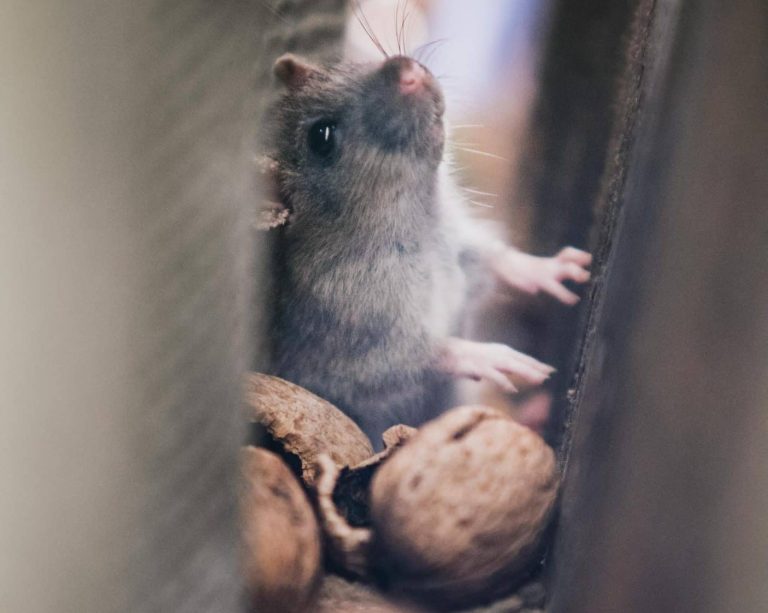Keeping your home pest-free often feels like a never-ending battle. Just when you think you’ve gotten rid of them, a new wave of unwanted visitors seems to show up. The real problem is that most pests are excellent at staying out of sight.
They creep into tight spaces, hide where you least expect, and multiply in silence until the problem becomes noticeable—and far harder to control.
Understanding where pests hide is the first step to preventing infestations. From your kitchen to your basement, pests take advantage of the warmth, food, and shelter your home provides. In this article, we’ll uncover the top places pests love to hide indoors, how you can spot the warning signs, and what you should do to protect your home and family.
Why Knowing Pest Hiding Spots Matters
Most homeowners only notice pests when they see them crawling across a counter, scurrying along the floor, or flying through a room. But by the time pests become visible, chances are the infestation has already taken root. This is why identifying common hiding areas is so important. Early detection can save you time, stress, and money in the long run.
Pests are more than a nuisance—they pose health risks, cause property damage, and make your living spaces uncomfortable. For example, cockroaches spread bacteria, rodents chew through wires, and termites silently destroy wooden structures. Knowing where these creatures like to hide ensures you can act before the situation becomes critical.
Common Pest Hiding Spots in Your Home
Here are the most frequent places pests hide inside your home. By regularly checking these areas, you can stay one step ahead of infestations.
- Kitchens and Pantries – Food crumbs, spills, and easy access to water make kitchens one of the most attractive spots for pests. Ants, cockroaches, and rodents often set up camp here.
- Basements and Crawl Spaces – Dark, damp, and undisturbed, basements are perfect breeding grounds for pests such as spiders, rodents, and silverfish.
- Bathrooms – Moisture-loving pests like cockroaches and silverfish thrive around sinks, bathtubs, and leaky pipes.
- Attics – Warm and quiet, attics attract rodents, bats, and insects looking for nesting areas.
- Closets and Storage Boxes – Moths, beetles, and even rodents hide in clothing, fabrics, and cardboard boxes that aren’t frequently disturbed.
- Furniture and Upholstery – Bed bugs and fleas burrow into mattresses, couches, and chairs where they can stay hidden while feeding.
- Walls and Electrical Outlets – Rodents and insects often hide within walls, chewing through wires or building nests where they’re hard to detect.
- Houseplants – Soil and leaves provide perfect hiding spaces for smaller pests like fungus gnats and mites.
Ticking Off the Risks: Why You Shouldn’t Overlook Tick Pest Control
One pest that homeowners often underestimate is the tick. While ticks are usually associated with outdoor spaces like tall grass and wooded areas, they can and do make their way inside. Pets bring ticks in after spending time outdoors, and once inside, these parasites will hide in carpets, upholstery, and bedding.
Tick pest control is particularly important because ticks aren’t just irritating; they carry serious health risks. Lyme disease and other tick-borne illnesses can affect both humans and pets. Unlike many pests that contaminate food or damage property, ticks also pose threats to health.
Inside your home, ticks gravitate toward warm, humid environments. If you don’t take preventative measures, a few ticks can quickly lead to an infestation. By investing in professional tick control, you reduce the risk of these dangerous pests spreading throughout your home and affecting your family’s well-being.
How to Spot the Warning Signs of Hidden Pests
Even if you don’t see pests directly, there are subtle signs that can help you identify whether they’re lurking in your home. Look out for:
- Droppings or shed skins near baseboards or hidden corners.
- Musty or unusual odors, which often come from cockroaches or rodents.
- Chewed wires, fabric, or cardboard.
- Tiny bite marks on your skin are a common indicator of bed bugs or fleas.
- Pet behavior changes, such as scratching more often or becoming restless.
Regular inspections of the key hiding spots listed earlier can make all the difference in catching infestations before they spiral out of control.
Steps You Can Take to Prevent Infestations
While professional services are often necessary for serious infestations, homeowners can take several preventative measures to reduce the risk of pests hiding inside their homes:
- Seal cracks and gaps around doors, windows, and foundations.
- Keep food sealed in airtight containers and clean up crumbs promptly.
- Fix leaks and reduce moisture in bathrooms, kitchens, and basements to prevent damage.
- Regularly vacuum carpets, rugs, and furniture.
- Store clothing and linens in sealed containers if they aren’t used often.
- Wash bedding frequently in hot water to deter bed bugs and dust mites.
- Trim shrubs and trees outside your home to reduce entry points for pests.
These small steps can create an environment that is far less attractive to pests.
Tick Control and Year-Round Protection
Ticks aren’t just a seasonal concern—they can be a year-round problem, especially in regions with mild winters. If you have pets, the risks multiply, since ticks often latch onto animals before making their way indoors.
Tick control services often include treating your yard, identifying entry points into your home, and ensuring indoor spaces like carpets and upholstery are free of ticks. By staying proactive, you safeguard your pets, your family, and your home. The key isn’t just dealing with ticks once they appear, but preventing them from establishing themselves inside.
Protecting Your Home From Hidden Threats
Pests are experts at hiding, and the damage they cause often goes unnoticed until it’s too late. From your attic to your basement, these invaders find ways to settle in and disrupt your home. Knowing where they hide and how to spot the early signs gives you the upper hand in keeping your living space safe and comfortable.
Ticks, in particular, represent one of the more dangerous hidden threats. Without professional tick pest control, they can spread quickly and bring health risks into your household.
By combining regular inspections, preventative steps, and expert help when needed, you can ensure your home remains pest-free and secure. After all, the comfort of your family and the value of your home depends on how effectively you manage the pests that prefer to stay out of sight.
*Sponsored Blog Post













